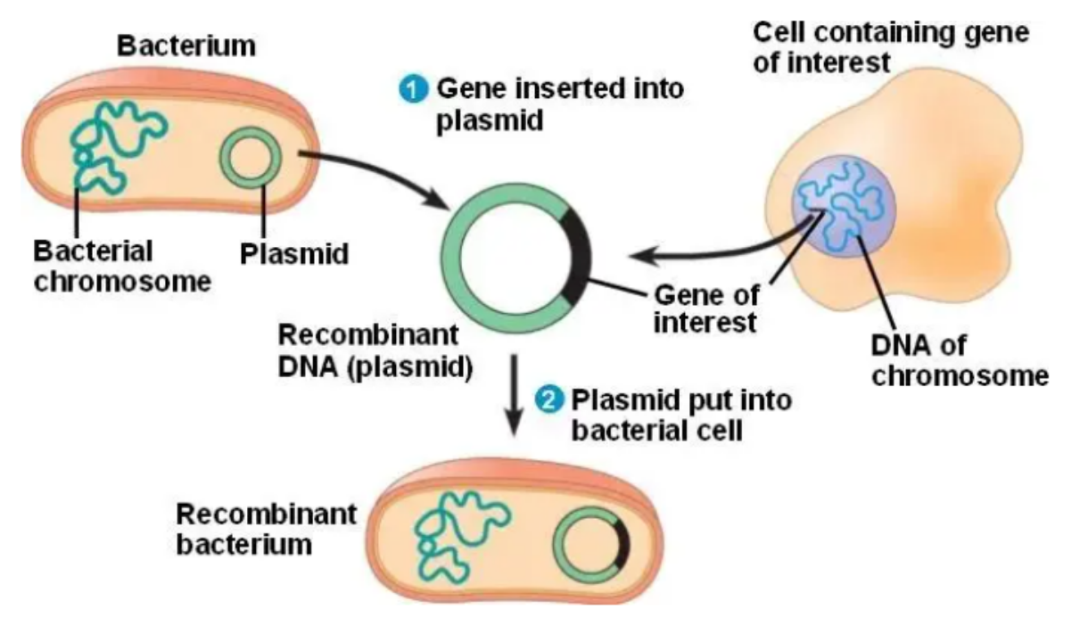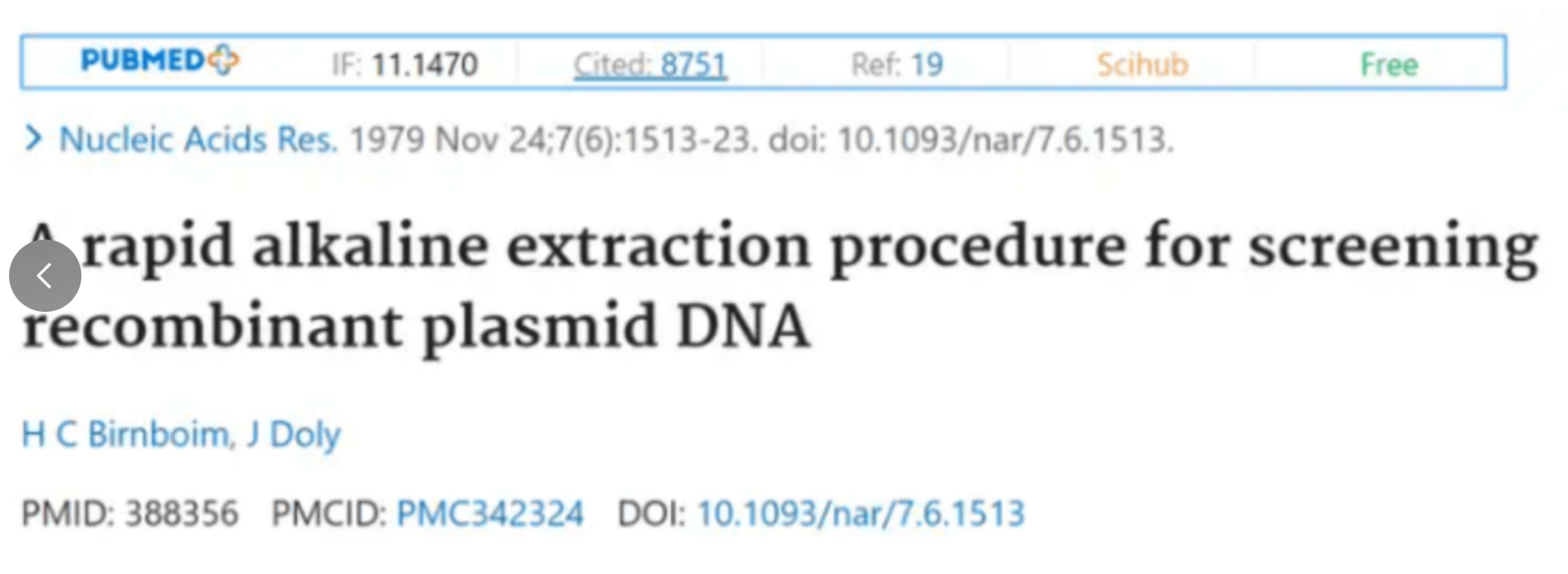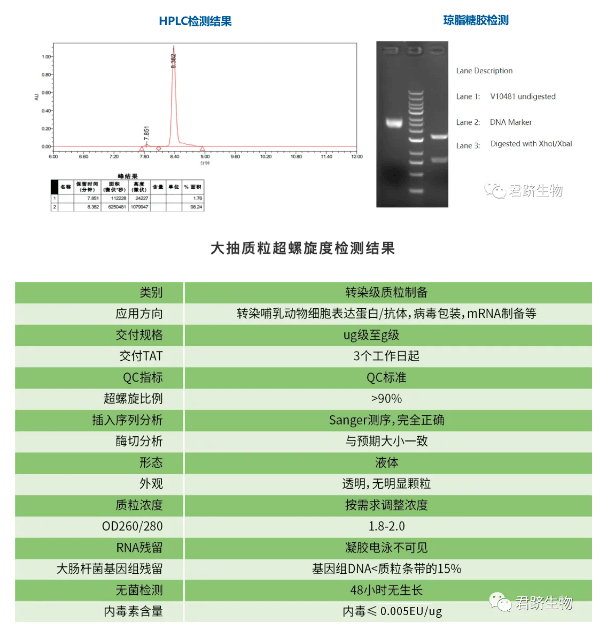

TOP

The operation of plasmid extraction can basically be done correctly by everyone, but the principle behind plasmid extraction may not be clear to everyone. In addition to the conventional plasmid extraction, there are also plasmid macroextraction, plasmid fast extraction and other kits. The only way to better master plasmid extraction is to understand the principle.

There are proteins,chromosomal DNA,plasmid DNA,RNA in the bacteria, our aim is to yank out the plasmid DNA and not to adulterate other biomolecules. Protein can be made to precipitate, RNA can be degraded by adding RNase, and the most critical thing is to distinguish chromosomal DNA from plasmid DNA.

Bacterial chromosomal DNA is cyclic and bound with a variety of NAPs (nucleoid-associated proteins). plasmid DNA is free in the cytoplasm and exists in the form of covalently closed circular DNA (cccDNA). In 1979, J. Doly published a rapid alkaline extraction procedure for screening recombinant plasmid DNA. plasmid DNA, which elucidated the method of plasmid extraction, often referred to as alkaline cleavage.

• Principle of extraction by alkali cleavage
1. Exposure of the bacterial suspension to an alkaline, strongly anionic reagent causes cell wall rupture, denaturation of chromosomal DNA and proteins, and intertwining with sodium dodecyl sulfate (SDS) in P2 reagent to form large complexes.
2. When potassium acetate reagent (P3) is added to neutralize, potassium ions in potassium acetate replace sodium ions to form insoluble potassium dodecyl sulfate.
3. Because the E. coli genome is a large molecule and has a complex spatial structure that is difficult to revert, it co-precipitates with denatured DNA and protein during centrifugation.
4. The small molecule plasmid DNA is quickly denatured and dissolved in the neutralizing solution, allowing the plasmid to separate from most of the E. coli genomic DNA and proteins.
• Plasmid extraction and purification are crucial steps in plasmid preparation, which, if not handled properly, may bring a series of adverse effects to downstream experiments
1. Incompletely extracted and purified plasmids may contain impurities such as host cell DNA, RNA, proteins or other cellular components. These impurities may interfere with subsequent molecular biology experiments, such as PCR, enzyme digestion, sequencing, etc., resulting in inaccurate or difficult to interpret experimental results.
2. Reduce transformation efficiency: Impure plasmids may reduce transformation efficiency when performing transformation experiments, making fewer plasmids to be successfully introduced into host cells. This will not only affect the expression level of the plasmid in the host cell, but also may affect the subsequent drug development and screening work.
3. Impact on plasmid stability: If the plasmid is not properly handled during extraction and purification, it may lead to degradation or damage of the plasmid. This may reduce the stability of the plasmid, making it prone to failure during storage and use, thus affecting the progress and effect of drug development.
JUNXI BIO provides large pumping plasmid services from ug grade to g grade, plasmid superhelix >90%, HPLC quantification, endotoxicity below 0.005EU/ug; from compliant synthesis to preparation of high-quality large pumping plasmids, to meet the preclinical research and development needs of the antibody drug, CGT, mRNA drug, and vaccine industries.

For more information about our services, please send an email to order@gentlegen.com Or call:0512-6799 8818 to 8888。